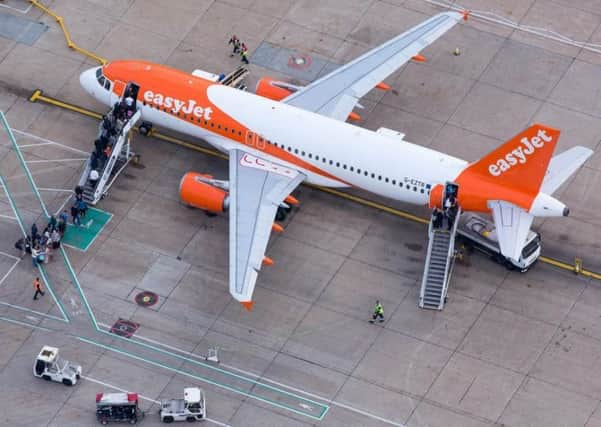Alastair Dalton: Hydrogen and batteries may be future of aviation


When it comes to carbon emissions, transport is the new number one.
The rise of green energy like wind farms and the closing of coal-burning power stations such as Longannet in Fife have seen the power sector eclipsed by vehicle-generated carbon dioxide.
Advertisement
Hide AdAdvertisement
Hide AdThe majority of this is from road transport, but a growing proportion is produced by aviation. Scottish Government figures show emissions from aircraft increased by nearly half between 1990 and 2015, and their proportion of Scottish transport emissions went up from 10 to 15 per cent.
Mindful of this as Scottish air traffic continues to grow, lobby groups such as Sustainable Aviation have argued that more efficient engines and greener fuels are making this ... sustainable. EasyJet, Scotland’s biggest airline, did just that in showcasing one of its new, more environmentally friendly aircraft at Glasgow Airport this week. The Airbus A320neo, short for “new engine option”, promises a 15 per cent cut in fuel use and emissions compared to EasyJet’s older aircraft.
This appears to be the airline blazing another trail, as it did with its first flight 23 years ago, between Luton and Glasgow. But perhaps just as significant, especially to those living under airport flight paths, and perhaps even those on board, the new plane is also said to be 50 per cent quieter on take-off and landing thanks to engine improvements.
So far, EasyJet only has six of the aircraft among its 270-plane fleet since introducing the first last summer, but this is due to increase to 30 by the end of the year and 100 by 2022. They have also proved popular with other airlines, with big orders from Lufthansa and Qatar.
Aviation analysts seem impressed too – one told me that orders have been strong because of the substantial improvements the aircraft has brought. However, its greener credentials are all very well, but such savings would be cancelled out if the number of flights from Scottish airports continues to go up.
EasyJet said it had reduced its carbon emissions per passenger per mile by nearly a third since 2000, but the number of passengers it has flown since then has increased from six million to 80 million. That’s a huge increase, even taking into account the fact the airline’s planes are flying fuller. Only 80 in every 100 seats were filled in 2007 compared to 93 in March.
The A320neo should further improve efficiency by the number of its seats being increased by six to 186, with the shrinking in size of its food-preparation galley and reconfiguring of storage so catering boxes can be stowed three deep horizontally. However, just like with cars and other road vehicles, EasyJet is already working on an electric future. Test flights with a nine-seat battery-powered plane are planned for this year and it hopes to carry passengers on short-haul electric flights within a decade. The carrier also plans to start trials in Toulouse next year on a hydrogen-powered taxiing system to move aircraft to and from parking stands at airport terminals by providing an alternative source of power to their wheels.
This could end the need for planes to have to use their engines to manoeuvre, which accounts for an astonishing four per cent of EasyJet’s fuel bill. The airline is a very significant player in aviation north of the Border, handling nearly one in three Scottish fliers.
But with aviation likely to remain under the environmental spotlight, EasyJet’s prominence means it will need to remain at the forefront of innovation to limit the impact of flying.
